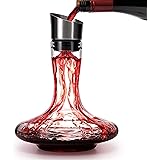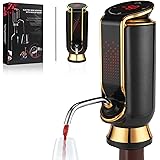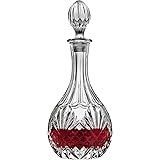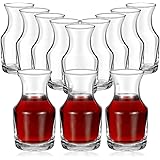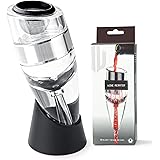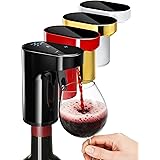Many individuals find themselves feeling less than confident when it comes to serving wine gracefully, often struggling with an awkward grip or the prevention of drips. This common issue, however, has a straightforward solution rooted in proper technique. As demonstrated in the accompanying video, mastering the art of how to hold and pour wine professionally can significantly enhance the serving experience, both for the host and the guests.
While the act of serving wine might appear simple, a refined approach is often overlooked. Incorrect handling can lead to spills or an unpolished presentation, diminishing the overall enjoyment of the wine. Fortunately, with a few key adjustments, anyone can achieve a confident and elegant pour, elevating any occasion.
The Foundation of Flawless Pouring
The significance of a proper wine pouring technique extends beyond mere aesthetics. It is understood that a controlled pour prevents wastage and potential staining, thereby maintaining a tidy environment. Furthermore, an assured server conveys a sense of expertise and care, enriching the entire dining or social experience.
Why Proper Wine Pouring Matters
When wine is poured clumsily, the risk of spillage onto tablecloths or clothing is dramatically increased. However, beyond the practical concerns, the manner in which wine is served often reflects on the host or the establishment. A refined technique is seen as a mark of sophistication, suggesting attention to detail and respect for the beverage being presented. This small act contributes greatly to the overall ambiance.
Moreover, an unhurried, controlled pour allows the wine to be presented at its best. It ensures that the correct amount is delivered to each glass, preventing overfilling, which can hinder a wine’s aeration and aroma development in the glass. Conversely, under-pouring might leave guests feeling underserved, so a balanced approach is consistently preferred.
Mastering the Grip: Where to Hold the Wine Bottle
As briefly mentioned in the video, the placement of one’s hand on the wine bottle is critically important for stability and control. It is often observed that people mistakenly grip the bottle around its “shoulder” or even the middle. However, these positions make pouring somewhat difficult, limiting leverage and increasing the chance of an unsteady pour.
The Ideal Grip for Stability and Control
For optimum control and a professional appearance, the wine bottle is traditionally held at its base. This can be achieved by placing the thumb in the punt (the indentation at the bottom of many wine bottles) and wrapping the remaining fingers around the base. This method provides maximum leverage, allowing for a steady and controlled pour, even with a full bottle.
Alternatively, if the punt is absent or the bottle’s shape makes this grip uncomfortable, holding the bottle firmly with all fingers and thumb around the lower portion of the body, just above the base, is also acceptable. This ensures that the bottle’s weight is properly distributed, allowing for graceful movement. It is often found that this provides a more natural feel for many people.
Avoiding Common Hand Placement Mistakes
Often, novices are seen holding the bottle by its neck or shoulder. Yet, this grip restricts the wrist’s movement, making it challenging to adjust the pouring angle smoothly. Furthermore, it causes the bottle’s weight to be distributed unevenly, which can lead to fatigue during prolonged serving or an abrupt, uncontrolled pour.
Instead of gripping too high, attention should be paid to positioning the hand lower down. This allows the bottle to be tilted with precision, ensuring that the pour is deliberate and elegant. It is typically understood that the less effort exerted, the more graceful the action appears.
The Art of the Pour: Techniques for Elegance and Precision
Once the bottle is securely held, the actual pouring motion becomes the next focus. A smooth, consistent stream is always desired, coupled with a clean finish to prevent any drips. These actions, when combined, demonstrate a true understanding of wine service.
Achieving a Smooth, Consistent Flow
The bottle should be tilted gradually, allowing the wine to flow steadily into the glass. Care must be taken to avoid a sudden gush, which can splash wine and potentially overfill the glass. A gentle angle is maintained, ensuring the wine touches the inside of the glass rather than plummeting directly to the bottom, which can aerate it too vigorously for some styles.
It is generally recommended to fill a wine glass to about one-third or half full, depending on the glass size and wine type. This leaves ample room for swirling and appreciating the wine’s aromas, which is an essential part of the tasting experience. Consistency across all glasses served is also highly valued.
The Crucial Twist: Stopping the Drip
Perhaps one of the most feared outcomes of pouring wine is the dreaded drip. However, this can be easily prevented with a simple, deliberate action. As the desired amount of wine is reached in the glass, the bottle should be gently rotated with a slight upward flick of the wrist as it is brought back to an upright position.
This subtle twist severs the stream cleanly, preventing any lingering drops from rolling down the side of the bottle. It is often seen that a small, clean cloth can be discreetly held in the other hand to catch any errant drops, adding an extra layer of professionalism. This technique is practiced by sommeliers worldwide to maintain pristine service.
Beyond the Basics: Advanced Wine Pouring Considerations
While the fundamental grip and pour are essential, several other factors contribute to a truly exceptional wine service. These considerations delve into the nuances of wine presentation, enhancing the guest’s overall appreciation.
Serving Temperatures and Glassware
The optimal enjoyment of wine is significantly influenced by its serving temperature. Red wines are typically served slightly below room temperature, generally between 60-68°F (15-20°C), while white and rosé wines are best enjoyed chilled, usually 45-55°F (7-13°C). Sparkling wines are often served even colder, around 40-45°F (4-7°C).
Similarly, the choice of glassware is not merely aesthetic; it is recognized that different glass shapes are designed to enhance the specific characteristics of various wine types. For instance, wider bowls are often preferred for red wines to allow for greater aeration, while narrower flutes are favored for sparkling wines to preserve their effervescence. This careful selection truly elevates the wine experience.
Pouring from a Decanter
Some wines, particularly older reds or those with significant sediment, benefit from decanting. This process involves carefully pouring the wine from its bottle into a separate decanter, allowing it to breathe and separating it from any sediment. When pouring from a decanter, the same principles of a steady, controlled flow are applied, but often with an even greater emphasis on gentleness.
It is frequently advised that the decanter be held by its base or neck, depending on its design, ensuring a firm grip. The wine is then slowly poured into the glass, with care taken to avoid disturbing any sediment that might have settled in the decanter itself. This procedure is a hallmark of sophisticated wine service.
Handling Sparkling Wines with Care
Pouring sparkling wine requires an additional level of caution due to its effervescence. The bottle should be held firmly at the base, and the wine should be poured slowly into a tilted flute glass. This technique helps to reduce the initial frothing, ensuring that more of the precious bubbles are retained in the wine.
The glass is often filled in two stages: an initial small pour to allow the foam to subside, followed by a second pour to reach the desired level. This method ensures an elegant presentation and maximizes the enjoyment of the sparkling wine’s delicate mousse. A steady hand and patience are essential for this type of pour.
Mastering the technique for how to hold and pour wine is more than just a skill; it is an art that enhances any social setting. With consistent practice of the correct grip and pouring motion, anyone can achieve a truly professional wine pouring presentation. This subtle refinement in serving wine speaks volumes about attention to detail and a commitment to hospitality.


